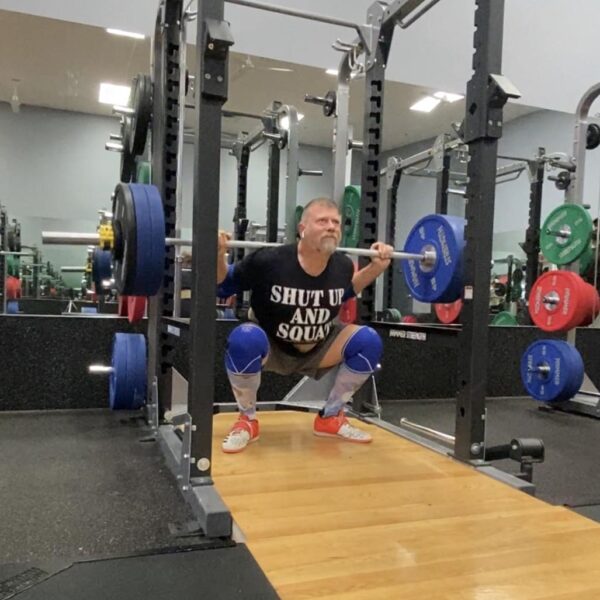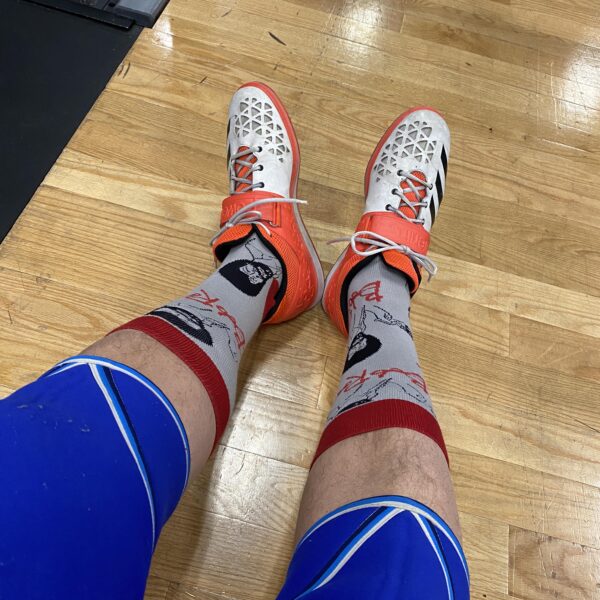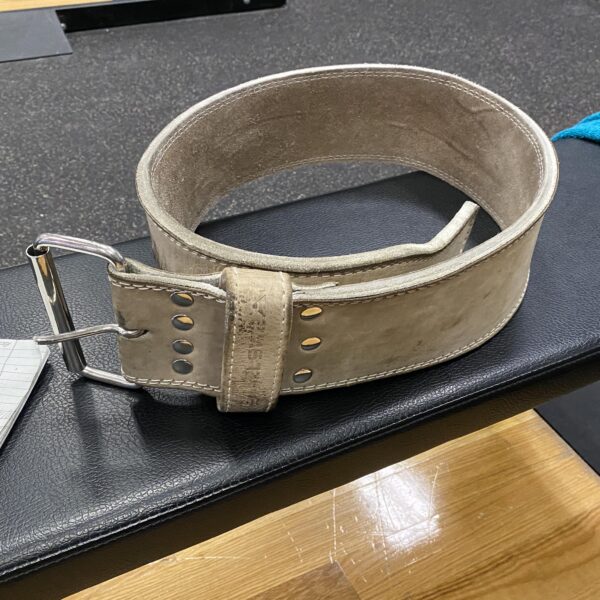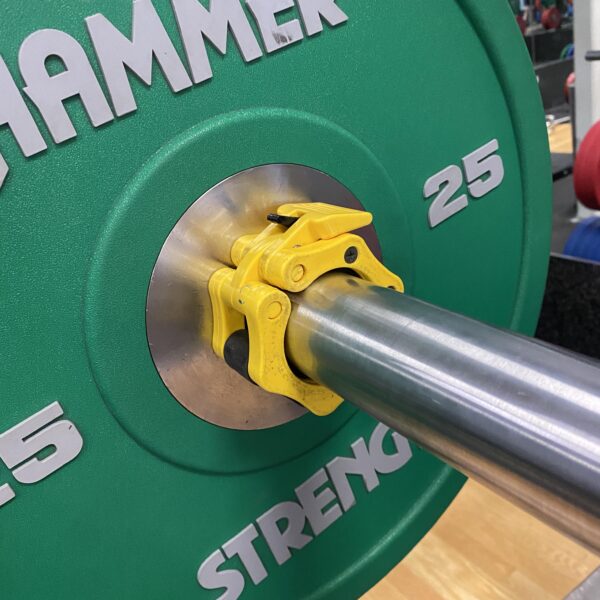Navigate This Post
GET OUR FREE WEEKLY NEWSLETTER
If you have made the commitment to get strong, you have taken an important step. We are going to consider just a few gym accessories that can help to make your strength training sessions far more productive.
While the majority of my strength training journey has taken place in my private garage gym, circumstances have found me spending a good amount of time in public fitness centers as of late. Though I make it a practice never to give unsolicited advice in a gym, or one the range, I will offer some advice here.

Minimum Effective Dose or Maximum Results
I have been training under Barbell Logic coaches for better than five years now and despite being long in the tooth, this old dog has indeed learned new tricks. The Barbell Logic strength coaching program stresses the Minimum Effective Dose (M.E.D.) model. That is, using the core lifts, they program their members to get the most benefit from the correct or minimum amount of time in the gym. They do NOT shortcut the workout, but neither do they add extraneous or superfluous exercises or movements. BLOC training sessions give you all you need and nothing that you don’t.
With the aforementioned established, it is incumbent upon the lifter to get the most out of every repetition under the bar. Other than a quality bar, weights, a rack and bench, there are a few gym / lifting accessories that can help you to get the most out of every rep you perform under the bar.
You might also like…
What I discovered first hand from working every day of the week with these kids was that we have largely failed to prepare them for the rigors of adulthood and civic duty.
– From article: 3 Methods to Prevent your Son from Becoming a Pussy
Weight Lifting Shoes
When I began my strength journey over five years ago, my coach, Matt Reynolds, told me not to buy a single piece of gym gear until I bought a good set of weight-lifting shoes. The shoes I purchased were the Adidas Powerlift and they have served me well for several years. Weight lifting shoes should last for years. Think about it. You wear them in the gym only, for 4-5 hours a week.
Lifting shoes are different from other athletic shoes because they provide a firm support that is consistent. There is deliberately no cushion or bounce in lifting shoes. Every time you set your feet for a squat, press, etc. you have consistent support. Cushions running shoes or “cross-trainers” are the worst footwear you could choose as your feet will never be in the exact place for every rep. When the weight begins to get heavy, you need rock solid support from your feet.
If you are currently performing squats in running shoes or in your socks, the addition of a quality set of lifting shoes will see your weight and reps increase and improve. If you buy nothing else, purchase a good set of shoes.

Choosing the Correct Weight Belt
First of all the weight belt is not a back support belt. We use a weight belt so we can perform the valsalva maneuver properly and consistently. The Art of Manliness has a great article on the valsalva maneuver. The placement of the belt correctly over your mid-abdomen provides a focal point and helps you to maintain consistency in your form.
First, do not waste money on a nylon and velcro belt. I know the price is attractive. The belt won’t last and you will have to buy a new one sooner versus later. Secondly, you do not need a double-pin buckle. One solid pin will be strong enough and you will eventually tire of trying to get the double-pins lined up.
Do buy a solid leather, single-pin belt from a reputable manufacturer. I purchased a four-inch lifting belt from Steel Sweat over three years ago and have used it for hundreds and hundreds of training sessions. A four-inch wide belt works for me because I have a long torso. If you have a short torso, you might want a 3-inch wide belt.
If you want to get fancy, you can purchase an incremental, ratcheting belt. Regardless of whether you buy a 3 or 4 inch wide belt, the belt should be 10mm thick. Just like shoes, a good belt will pay for itself and last for years.

Good Collars
At 99% of all public gyms, the barbell collars are the cheap spring designs. There is a reason for this. The gym has to buy a lot so they buy whatever is the cheapest. Also, because these spring collars are cheap and sh***y, no one is going to throw them in their gym bag and take them home.
The spring-type barbell collars are generally a pain in the ass to put on and remove and they rarely hold the plates snuggly. We can do better.
A quality set of 2 inch or “Olympic” barbell collars are not expensive or hard to come by. You can get a good set of collars online for less than $20. Most even come with a little bag to put them in if that is important to you.
If all you have ever used are the sh***y spring collars, using a better set will bring a smile to your face. You will wonder why you wasted so much time using inferior equipment. In addition to a person wearing lifting shoes and using a leather belt, bringing your own collar to the gym is a sign of a person who is serious about strength training.

That’s it. There are a few other items that help, but that is a story for another time. Those three gym accessories; lifting shoes, weight belt, and good collars should help you to have a more productive and enjoyable strength training experience.
Fighting Solves Everything; Destroying Cancer with Faith, Nutrition, and Science
Professor Paul Markel
Latest posts by Professor Paul Markel (see all)
- Tactical Masturbation: Top 3 Stupid Human Tricks - July 8th, 2024
- Blood Trail: Fearless Fiction - June 21st, 2024
- SOTG and SB Tactical Celebrate Brace Ruling - June 20th, 2024
- Shotgun Accessories: Practical and Useful - June 14th, 2024
- Tactical Rifle Tips: Transition Drills - January 5th, 2024






Recent Comments